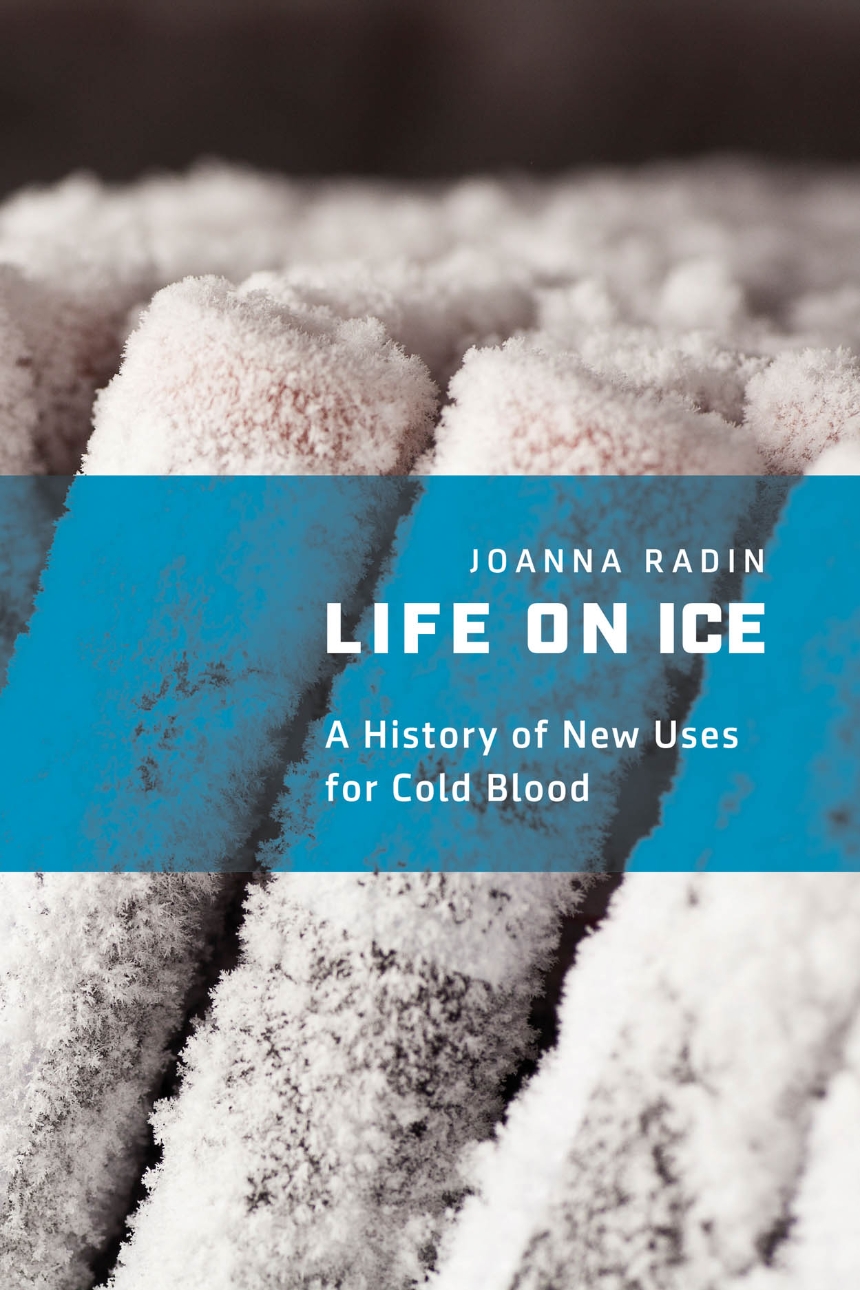Life on Ice
A History of New Uses for Cold Blood
After the atomic bombing at the end of World War II, anxieties about survival in the nuclear age led scientists to begin stockpiling and freezing hundreds of thousands of blood samples from indigenous communities around the world. These samples were believed to embody potentially invaluable biological information about genetic ancestry, evolution, microbes, and much more. Today, they persist in freezers as part of a global tissue-based infrastructure. In Life on Ice, Joanna Radin examines how and why these frozen blood samples shaped the practice known as biobanking.
The Cold War projects Radin tracks were meant to form an enduring total archive of indigenous blood before it was altered by the polluting forces of modernity. Freezing allowed that blood to act as a time-traveling resource. Radin explores the unique cultural and technical circumstances that created and gave momentum to the phenomenon of life on ice and shows how these preserved blood samples served as the building blocks for biomedicine at the dawn of the genomic age. In an era of vigorous ethical, legal, and cultural debates about genetic privacy and identity, Life on Ice reveals the larger picture—how we got here and the promises and problems involved with finding new uses for cold human blood samples.
The Cold War projects Radin tracks were meant to form an enduring total archive of indigenous blood before it was altered by the polluting forces of modernity. Freezing allowed that blood to act as a time-traveling resource. Radin explores the unique cultural and technical circumstances that created and gave momentum to the phenomenon of life on ice and shows how these preserved blood samples served as the building blocks for biomedicine at the dawn of the genomic age. In an era of vigorous ethical, legal, and cultural debates about genetic privacy and identity, Life on Ice reveals the larger picture—how we got here and the promises and problems involved with finding new uses for cold human blood samples.
288 pages | 16 halftones | 6 x 9 | © 2017
Anthropology: Cultural and Social Anthropology
Biological Sciences: Evolutionary Biology
History: Environmental History, History of Technology
Reviews
Table of Contents
Preface: Frozen Spirits
Introduction: Within Cold Blood
Part 1 The Technoscience of Life at Low Temperature
Chapter One: Latent Life in Biomedicine’s Ice Age
Part 2 Temporalities of Salvage
Chapter Two: “As Yet Unknown”: Life for the Future
Chapter Three: “Before It’s Too Late”: Life from the Past
Part 3 Collecting, Maintaining, Reusing, and Returning
Chapter Four: Managing the Cold Chain: Making Life Mobile
Chapter Five: When Futures Arrive: Lives after Time
Epilogue: Thawing Spirits
Acknowledgments
Notes
Bibliography
Index
Introduction: Within Cold Blood
Part 1 The Technoscience of Life at Low Temperature
Chapter One: Latent Life in Biomedicine’s Ice Age
Part 2 Temporalities of Salvage
Chapter Two: “As Yet Unknown”: Life for the Future
Chapter Three: “Before It’s Too Late”: Life from the Past
Part 3 Collecting, Maintaining, Reusing, and Returning
Chapter Four: Managing the Cold Chain: Making Life Mobile
Chapter Five: When Futures Arrive: Lives after Time
Epilogue: Thawing Spirits
Acknowledgments
Notes
Bibliography
Index
